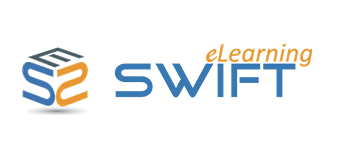Scenario: Adobe Flash reaches end-of-life
Let’s take the example of – none other than – eLearning development.
- Until six years ago, the majority of eLearning solutions would choose Adobe Flash as its platform to create eLearning courses. In the context of the latest technological advancements, it became a need – in fact mandatory – for online content to be developed rapidly and to be played in all types of gadgets/ mobile devices to reach a wider audience.
- Primarily with its non-compatibility issues with the latest browsers and other gadgets, Adobe Flash gave way to the rapid eLearning authoring tools. Now, in the post-Flash era, the Learning and Development departments are working on converting old Flash courses into HTML5.
- Assuming, if the employees of an eLearning company do not update themselves technically in the direction of rapid eLearning, it would certainly affect their performance and subsequently, the profits of the organization.
Also Read: Elearning courses Conversion from Flash to HTML5 – Major obstacles
How to increase employees’ confidence levels:
Next to the salary, employees in an organization get motivated with new learning skills and the subsequent experience they get through those skills. Learning helps them to move up the hierarchy ladder in the same workplace.
- Employees of a start-up company – where there is a financial crunch and the management is struggling to cope with the basic infrastructure requirements – would know how badly the situation affects their motivational levels, as they are deprived of advanced technological tools and training facilities. There is every chance that they perform tasks with a grumbling attitude, lacking motivation as they feel that their skillset is not updated and is not matching with the market requirements.
- An employee’s learning skills can be updated only when they are exposed to the latest technological advancements. The introduction of advanced technology:– changes the way they perform a task,
– improves their overall performance,
– reduces their working effort and task-completion time, thus augmenting their confidence levels to compete with the market




